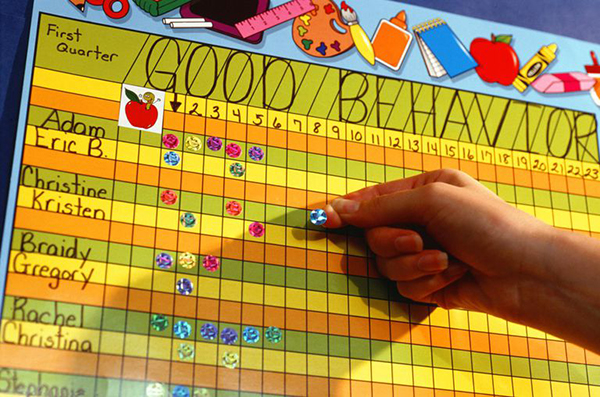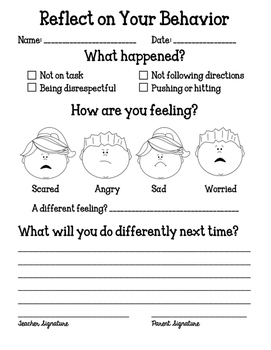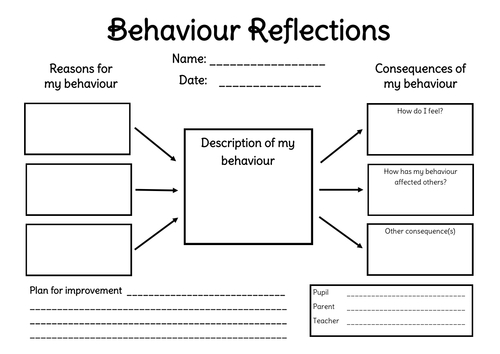Responsive Classroom will be part of my teaching philosophy because it gives students support and guidance. I will implement reinforcing language, reminding language and redirecting language within the classroom. As a teacher I will also greet each student by name as they are entering the classroom, so that they feel welcome within the space. I will give students the benefit of the doubt and if a student is consistently misbehaving in class or not connecting with the material, then I will implement the two-by-ten strategy. This strategy will encourage the student to open up and possibly connect with the teacher, thus they will feel more comfortable within the classroom.
Expectations: For Expectations, I will display posters that show the rules. During the first day of class, as a community, we will help to create the rules and expectations, then students will sign it like a contract. This will help to hold students accountable and give them responsibility in the art room. students hold each other and themselves accountable. This helps to remind students how they should behave within the art classroom. The expectations include:
However the overall simple rules will be to listen and follow directions; raise your hand before speaking; respect your classmates, tools, supplies and your teacher; and keep you hands, feet and objects to yourself. As a teacher I will be very clear about safety and expectations before each project.
Rewards: As a teacher, a rewards system can be difficult. I believe it all depends on the school and their rules and protocols. If pizza parties and food are allowed, then there can be a sticker system that could add up to a class party.
Rewards depend on the students and what their interests are. Many students enjoy free drawing, which can be implemented as a reward for good behavior. Short projects and activities can be tailored for students as rewards, it all depends on what their interests are.

In addition, if there is a rewards system in place with the school, I would implement that within the classroom. For instance, Frost Middle School gives zone cards for students that exhibit responsibility, resilience or kindness. The zone cards can buy students food items and treats at the special quarterly lunch. It is much easier for teachers to reward students if there is a system in place within the school.
Consequences: It is very important to view misbehavior as a teachable moment, while also holding students accountable for their actions. Students would first receive a verbal warning if I see the action occur. If I do not see the action occur, I will not place blame or accuse students, however I will talk to students individually and ask them what happened. Sometimes students need to separate in order to refocus, but I would do my best to handle the situation within the classroom. Most schools have a behavior policy in place, and it differs from school to school. For instance, Daniel’s Run Elementary utilizes a buddy classroom method for students to leave the art room and attend another classroom in order to reflect, then when they are ready to be productive they can come back into the art classroom. However, many schools use reflection sheets. The fourth time a student misbehaves they will receive a reflection sheet, where they will reflect on their actions and hopefully learn from the experience.

Behavior Reflection for Younger Students 
Behavior Reflection
This reflection sheet will be requires a parental or guardian signature. If there are additional misbehavior occurrences, I will have to involve parents, homeroom or additional teachers and my superiors in order to come to a routine or solution to meets the student’s behavioral needs.
Documentation: I will grade while students are working. There will be documentation for administration and parents to reflect on. This documentation includes daily checklists, different phases of the project, and final rubrics and critiques. I also plan to photograph student work for both documentation purposes and student portfolios. In addition, all of the student exhibits will include explanations of the projects and media to provide further clarity.

Artsonia 
Google Classroom
Partners: As an art teacher, I would write my own curriculum and create lessons that are legible for grade level teachers and administrators. When student work is complete, students will create a reflection or artist’s statement that corresponds to the work, which will allow partners (teachers, administrators, and parents) to understand what the project entails. Furthermore, students create physical and online portfolios that they can later reflect on. I will provide many opportunities for students, teachers, parents, and administrators to understand the curriculum.
Proactive Reflection: Within lessons, I will do “Checks for Understanding” and if many students do not understand, I will reteach and reimplement the lesson. I will also consistently remind students of the expectations and try my best to check in with students individually. If many students are not understanding or meeting project expectations that is on me as a teacher to reteach and re-clarify.
Classroom Routine: As a teacher, I believe classroom management largely consists of engaging lessons and classroom routines. Each class will begin with a class discussion about current projects and expectations. Current projects will be labeled and on display for students, so that students are aware of what they are working on. Students will be seated at color coordinated tables and they will be responsible for getting their table’s materials. All of the classroom supplies will be labeled and color coordinated. Students will use the supplies that match their table color. To make clean up easier and avoid messes or clusters at the sinks, the sinks will be designated for particular table colors. To make class time and clean up run smoother, there will be a timer that will go off 10 minutes before class is over, for students to clean up and put their work away.






